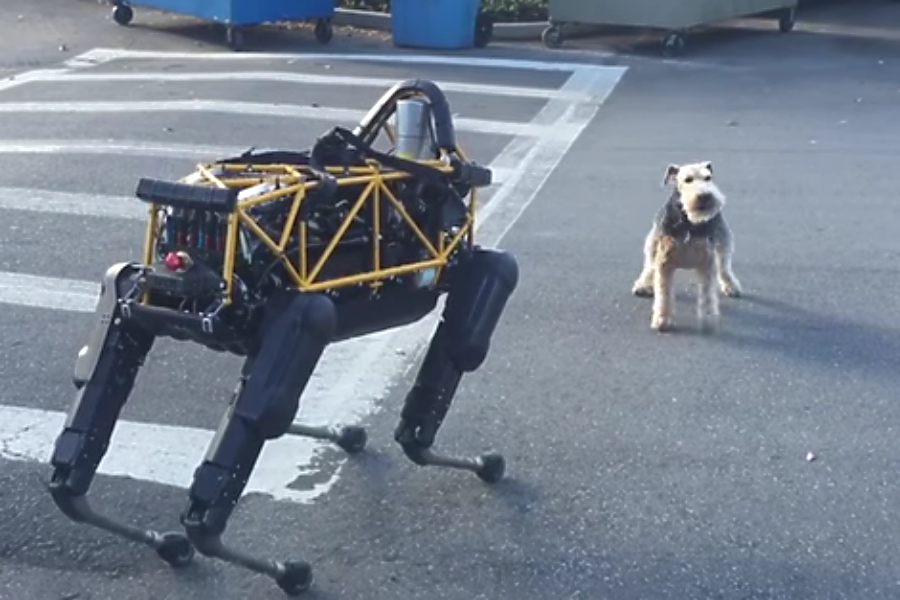Will robots become pets? Maybe, but your dog won't like it.
Loading...
The first meeting between a robot dog and a biological dog fell short of a fairy-tale love story.
Last week, Spot, a robot made by Boston Dynamics, met a small terrier in a parking lot. The exchange quickly became confrontational as the confused dog, Cosmo, began aggressively barking and posturing at the faux dog. It ended only after Spot made a retreat.
Despite the defeat, Spot is one of the most advanced robots capable of maneuvering through nearly any terrain. It was originally designed as part of a military project. Only one such robot is in civilian hands, according to HNGN.
The encounter provided a humorous video, which has gained over a million views on YouTube, but seeing the robot dog and real dog side-by-side also raises questions about how robots will interact with humans and their capacity to act as pets in the future.
“Now you have a whole lot of cooperative robots that are safe to be around and can work with people. This is just the start,” Dr. Michael Gennert, director of Robotics Engineering at Worcester Polytechnic Institute in Massachusetts, told The Christian Science Monitor.
The age of robots interacting with humans outside of laboratories and inside homes started with the Roomba, according to Dr, Gennert. The Roomba is a self-directed robotic disk that vacuums houses and is able to navigate around walls and obstacles by itself. It went onto the consumer market in 2002.
And although there are many obstacles that need to be overcome before commercialized robotics can evolve from Roombas to robotic dogs – like self-awareness, environmental understanding, and safety, the concept of a pet robot might be closer to reality than many suspect.
“Pets are a nice model to use. People respond to them well. We have a model of how they’ll work. And they’re viewed as inherently safe,” Gennert told the Monitor.
Scientists are already developing robots to capitalize on the animal model. A robot seal, known as the PARO robot, is widely used in Japan as a therapeutic companion for the elderly, aiding relaxation and lowering stress. Worcester Polytechnic Institute is also developing the PABI robot, a robotic penguin that is used as a comfort tool for autistic children.
“We’ll see the easier applications tackled first,” Gennert explained, in reference to the range of commercialized robots geared toward communication. “But over time we’ll see robots that are more physically engaged … in areas where people spend a lot of their time and might need some help.”
Spot, the robot dog seen in the video, was one of the later iterations of a project to develop a robot that could carry equipment for military personnel on missions. Despite improvements with each model, the program was shut down after the military decided the robots were too loud to be used in the field.
Other robot projects by Boston Dynamics have had more success, including the new generation of Atlas, a man-like robot in development. A recent video released by the company showed an Atlas robot placing boxes on shelves and responding to external obstacles, like being pushed down or having a box it was holding moved away.








